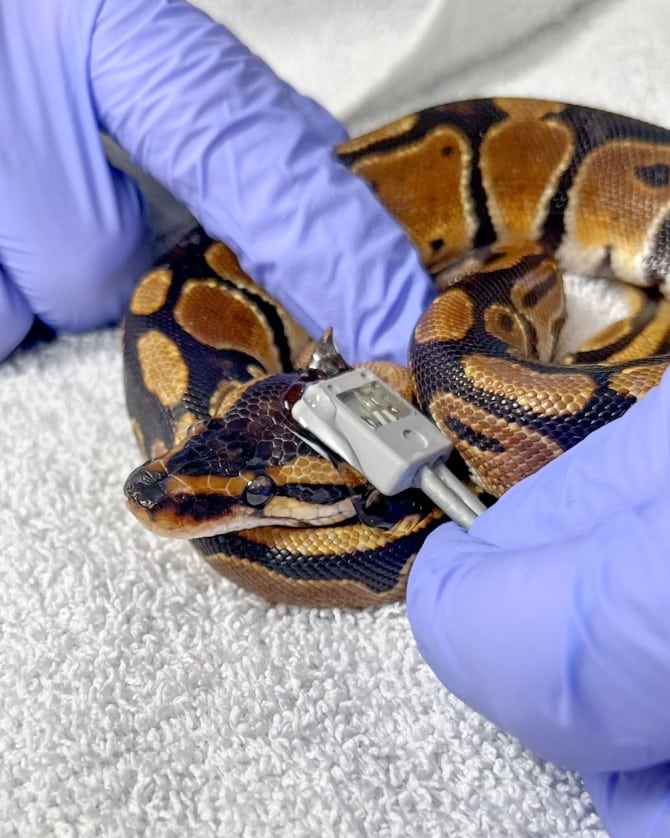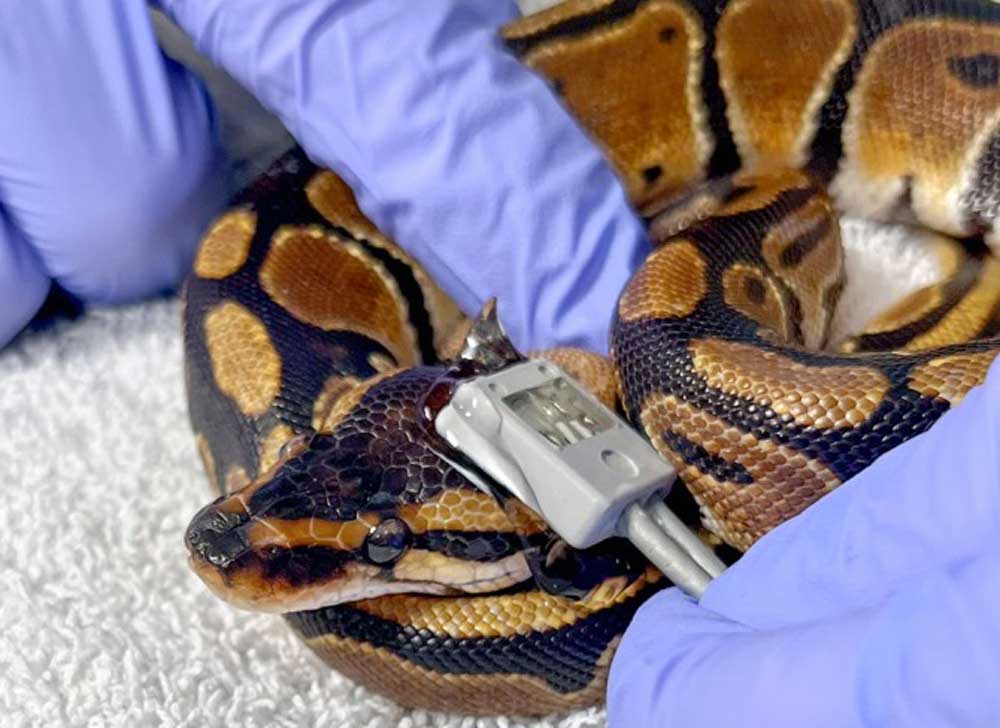Ball pythons have a median heart rate and median pulse rate of 60 beats per minute.
Because a standard technique to measure the pulse rate in reptiles has been nonexistent, researchers with Cornell University have discovered that the pulse rate can be measured. It started with a bearded dragon that had an aneurysm which had an enlarged temporoorbital artery due to its condition.
“You could put the Doppler there, and you would hear the pulse rate very well,” Dr. Nicola Di Girolamo told the Cornell Chronicle about the discovery. Di Girolamo is the corresponding author of the study. “We thought it was only happening because the vessel was so distended, but then we checked another bearded dragon kind of randomly in the same area, and we realized that it had the pulse there.”

The ball python’s pulse is measured at the temporoorbital artery. Photo by Nicola Di Girolamo/Cornell used with permission
They used a veterinary ultrasonic Doppler flow detector on the temporoorbital arteries of 40 healthy ball pythons (Python regius) of varying ages to obtain the pulse rate.
What they found was the ball python had a median heart rate and median pulse rate of 60 beats per minute. The also determined that the pulse rate was synchronous with the heart rate when measurements were taken simultaneously.
Gene That Creates Piebald Ball Python Identified
The pulse was found in the same location of other reptiles, including leopard geckos, turtles and tortoises, and snakes. Dr. Di Girolamo noted that reptile keepers are seeking advanced care for their pet reptiles, and knowing where to take the pulse is necessary to achieve good outcomes when treating reptiles.
An abstract of the study, “Temporoorbital pulse rate can be obtained in ball pythons (Python regius) of any size and age and agrees with heart rate” can be read on the VetRecord website.



